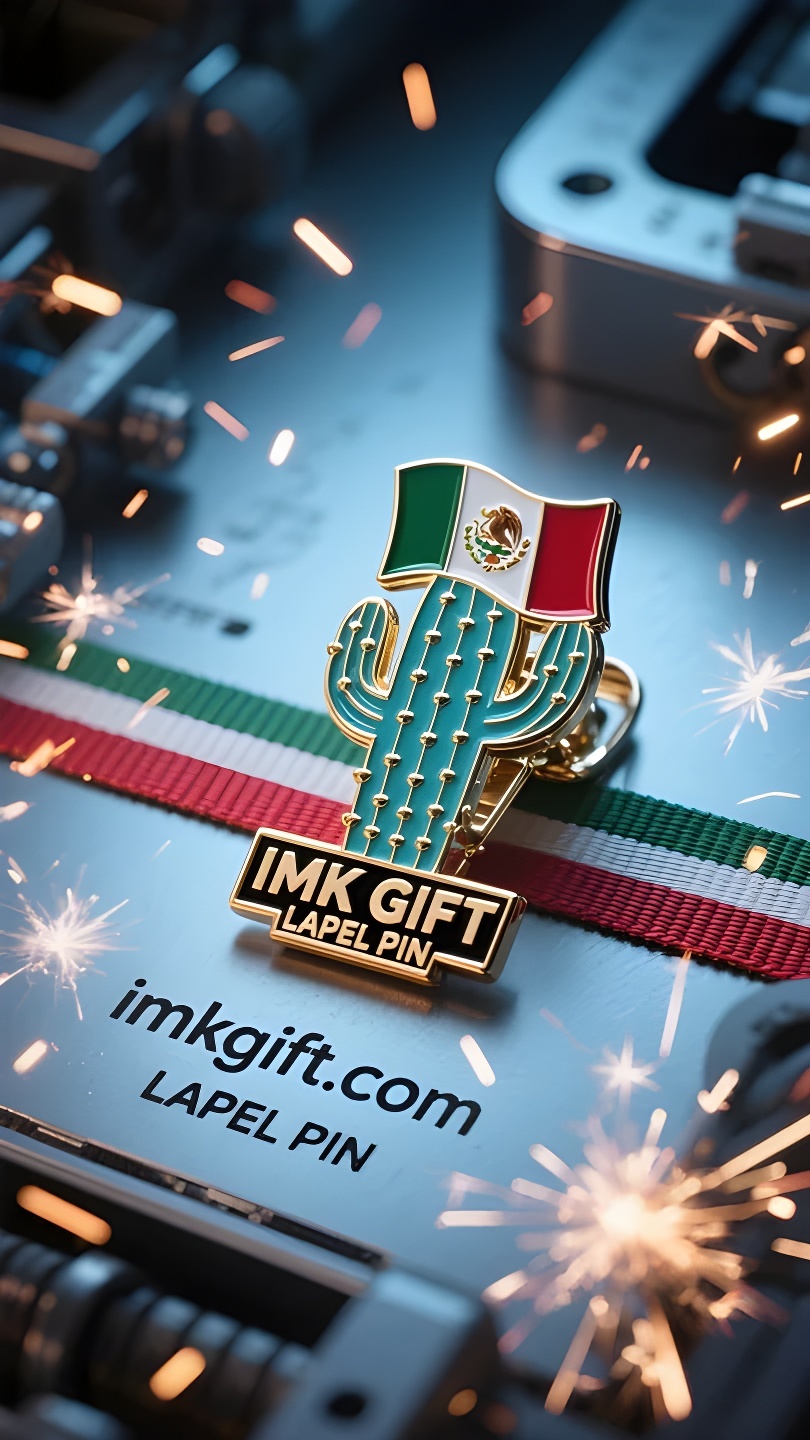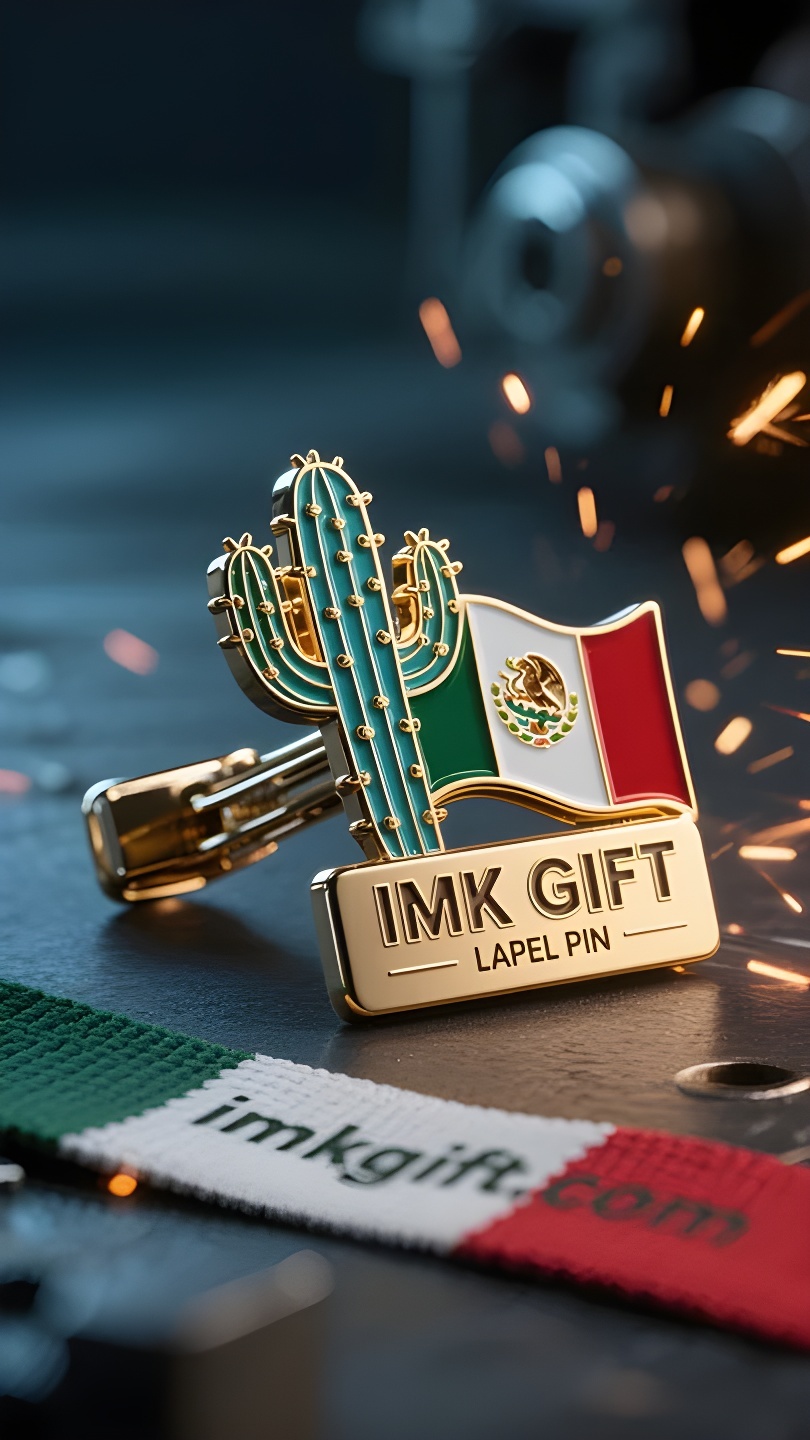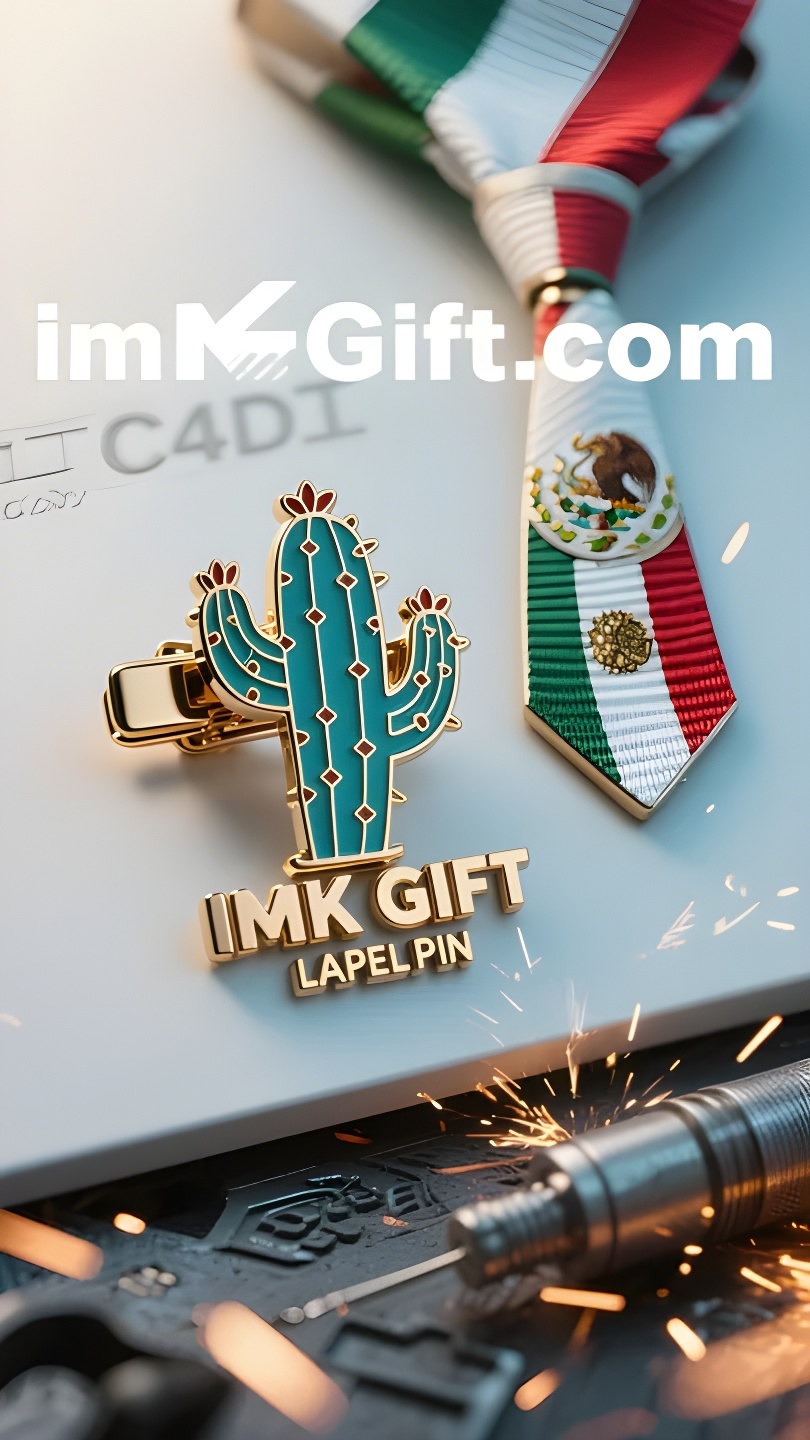in986-Medalla-del-desierto-prendida-en-el-cuello
▼
Cada septiembre, los vítores por el Día de la Independencia de México resuenan en las calles y los tótems del águila y el cactus de la bandera nacional tricolor se extienden con el viento. Esta planta del desierto enraizada en el centro de la bandera nacional no sólo es el tótem espiritual de la fundación del país por los aztecas, sino que también se ha convertido en un símbolo cultural único en los tiempos modernos: el clip de corbata en forma de cactus se está convirtiendo en una medalla en miniatura en el cuello de los profesionales mexicanos. Según la leyenda, los antepasados aztecas vieron un milagro de un águila sostenía una serpiente sobre un cactus, y así construyeron la ciudad de Tenochtitlan en el lago salado. El clip de corbata en forma de cactus hereda el código de la memoria de esta nación: las espinas afiladas son una armadura para resistir las dificultades y los tallos y hojas gruesos son contenedores para acumular fuerza. Incluso si están quemados por el sol abrasador y cubiertos de arena y piedras, aún mantienen una postura de crecimiento hacia arriba. El empresario mexicano Carlos Slim dijo una vez: “El jugo de cactus fluye por nuestras venas”. Esta resiliencia profundamente arraigada en nuestra sangre ahora se ha convertido en un tótem en cada centímetro de metal. Cuando los profesionales modernos usan pinzas de corbata con forma de cactus, no solo heredan el espíritu de la bandera nacional, sino que también implican una triple filosofía de vida: el borde profesional afilado como una espina protege el ideal, la resistencia a la presión como una estructura de almacenamiento de agua hace frente a los desafíos, y el punto de crecimiento superior que siempre mira hacia el sol simboliza el coraje para romper el status quo. Así como los cactus en el desierto pueden florecer con una diferencia de temperatura de 50℃ entre el día y la noche, los mexicanos creen que la verdadera gloria no reside en florecer en circunstancias favorables, sino en la persistencia en situaciones desesperadas. Esta medalla del desierto, prendida en el cuello, es un recordatorio constante: la magnificencia de la vida a menudo nace en los campos de pruebas más rigurosos.
Every September, cheers for Mexico’s Independence Day resound through the streets and alleys, and the eagle and cactus totems on the tricolor flag stretch in the wind. This desert plant rooted in the center of the national flag is not only the spiritual totem of the Aztecs’ founding of the country, but has also evolved into a unique cultural symbol in the contemporary era – the cactus-shaped tie clip is becoming a miniature medal on the collar of Mexican professionals. According to legend, the Aztec ancestors saw the miracle of an eagle holding a snake on a cactus, and thus built the city of Tenochtitlan in the salt lake. The cactus tie clip inherits the code of this national memory: the sharp thorns are armor to resist difficulties, and the thick stems and leaves are containers for accumulating strength. Even if they are scorched by the scorching sun and polished by sand and stones, they still maintain an upward growth posture. Mexican entrepreneur Carlos Slim once said: “The juice of the cactus flows in our veins.” This toughness deeply rooted in the blood has now turned into a totem between square inches of metal. When modern professionals wear cactus tie clips, they are not only inheriting the spirit of the national flag, but also implying a triple philosophy of life: the sharp professional edge like a thorn protects the ideal, the pressure resistance like a water storage structure copes with challenges, and the top growth point that always faces the sun symbolizes the courage to break through the status quo. Just as the cactus in the desert can bloom in a temperature difference of 50℃ between day and night, Mexicans believe that true glory does not bloom in good times, but persists in desperate situations. This desert medal pinned on the collar is a constant reminder: the magnificence of life is often born in the most rigorous trials.
每年九月,墨西哥独立日的欢呼声响彻大街小巷,三色国旗上的雄鹰与仙人掌图腾在风中舒展。这株扎根于国旗中央的沙漠植物,不仅是阿兹特克人建国的精神图腾,更在当代演化成一种独特的文化符号——仙人掌造型领带夹,正成为墨西哥职场人衣领上的微型勋章。
传说中,阿兹特克先民在仙人掌上看见雄鹰衔蛇的神迹,由此在盐湖中建起特诺奇蒂特兰城。仙人掌领带夹继承了这个民族记忆的密码:尖锐利刺是抵御困境的铠甲,肥厚茎叶是积蓄力量的容器,即便被烈日炙烤、砂石磨砺,依然保持向上生长的姿态。墨西哥企业家卡洛斯·斯利姆曾说:”我们血管里流淌着仙人掌的汁液”,这种深植血脉的韧性,如今化作方寸金属间的图腾。
现代职场人佩戴仙人掌领带夹时,不仅是对国旗精神的传承,更暗含三重生命哲学:利刺般的专业锋芒守护理想,储水结构般的抗压能力应对挑战,而永远向阳的顶端生长点,则象征着突破现状的勇气。正如沙漠中的仙人掌能在昼夜50℃温差中开花,墨西哥人相信,真正的荣耀不在顺境时的绽放,而在绝境中的坚持。这枚别在衣领上的沙漠勋章,时刻提醒着:生命的壮美,往往诞生于最严苛的试炼场。
▼
Contact Us
📞 Tel: +0086-760-85286839
📧 Email: sales3@imkgift.com








